In the midst of strategizing, we decide victory from a thousand miles away. Hello everyone, I am Lin Chao, a global financial market observer, focusing on cryptocurrency market analysis, bringing you the most in-depth trading information analysis and technical teaching.
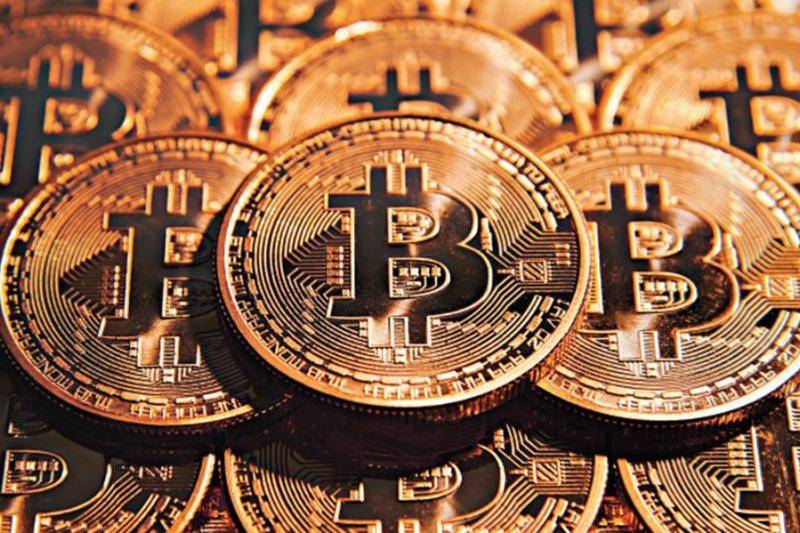
The market is in extreme panic, confidence has collapsed, and everyone is bearish. Bitcoin has continuously lost key levels, 110,000, 100,000, 90,000. Every time it approaches these critical ten-thousand-point levels, many people wait for a rebound, but the reality is that the trend has already formed. Therefore, since October, Lin Chao has been reminding everyone in the article that reducing positions at highs and shorting at highs is the best strategy. Now the market fear index has dropped below 15, the last occurrence was on February 27 this year. Since the formation of this bull market in 2023, both the 50-week and 60-week moving averages, which have never been effectively broken, have been lost. Given the current strength of the rebound, it is definitely not going to recover in the short term. Additionally, the previous low of 90,000 also struggled for a moment before being lost. These important support levels have all been broken with volume, and not recovering in the short term means they have been effectively broken.
This week, the market stopped falling at 94,000, which also touched the weekly ascending trend line. This is still the convergence of the lower boundary of the descending channel and the Fibonacci 0.382 retracement line, and for now, it has temporarily stopped falling. However, the rebound seems weak, with no long lower shadows or volume signals appearing. The rebound at 94,000 is also following a slight rebound in the US stock market after hours, and this kind of rebound is unhealthy; if the bears exert a little more force, it will break through the support!
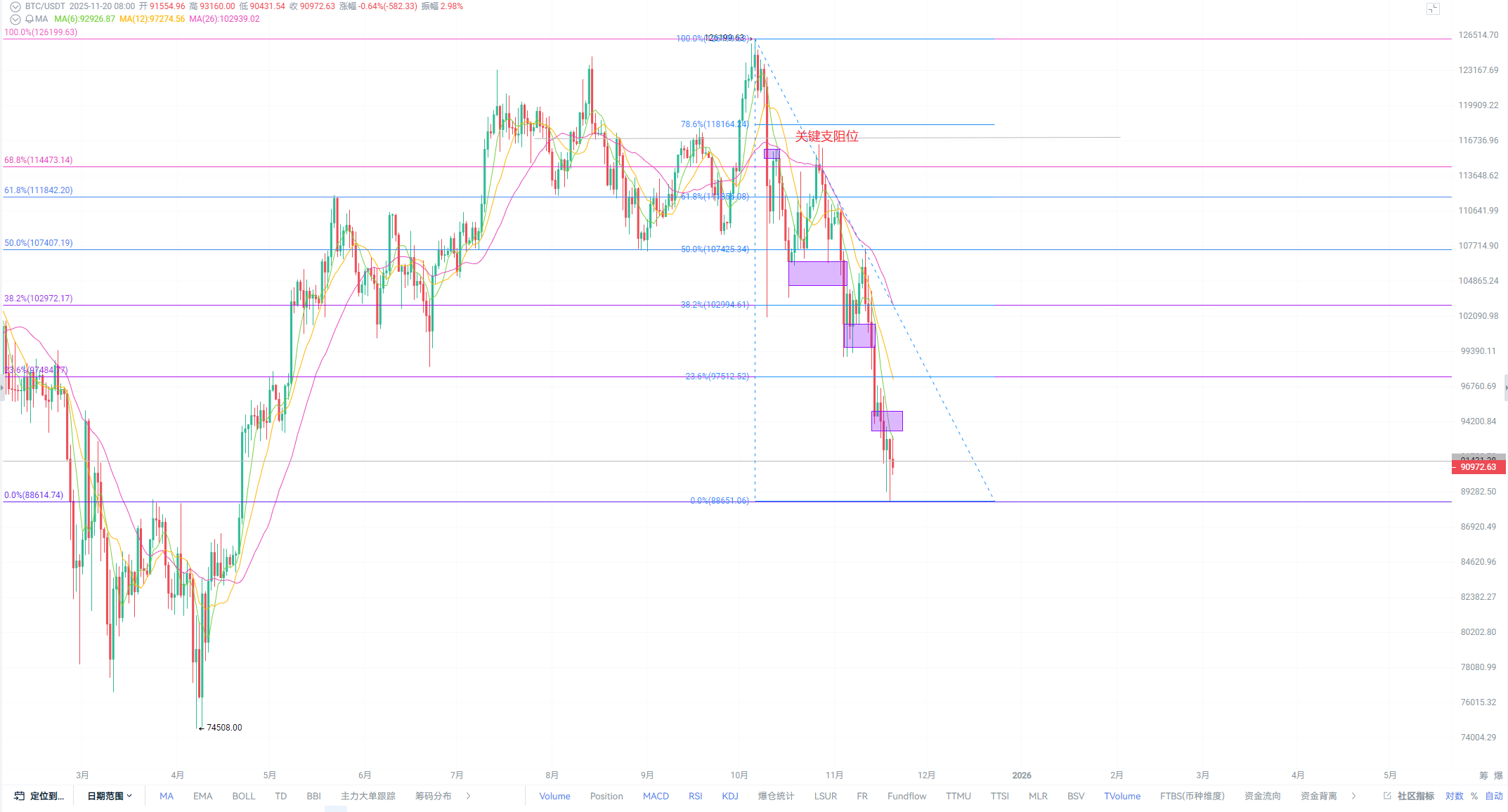
From a technical perspective, the medium to long-term trend has fully turned bearish, and liquidity is severely lacking. This wave of decline has hardly seen any decent rebounds, coupled with the Federal Reserve's various committee members' negative attitudes towards interest rate cuts in December. Therefore, Lin Chao believes that the policy, news, and technical aspects do not support a continued bull market. Those still fantasizing about bottom-fishing or a big rebound will only face disappointment time and again. Unless there is a strong external stimulus to create a V-shaped reversal, it will be extremely difficult to have a decent market in the remaining month of the year! With the bear market arriving, everyone should be mentally prepared for a long-term struggle.
The speed of the decline has indeed exceeded everyone's expectations. The past cannot be changed; we can only accept it and seek opportunities in the current and upcoming market to minimize losses. Since the bear has arrived and the downtrend has formed, it is essential to lower expectations and preserve strength. The upcoming operational strategy is also quite clear: reduce positions at highs in spot trading, choose relatively stable large-cap cryptocurrencies, and short at highs with low leverage is the best strategy.

Recently, the market direction can no longer rely solely on the cryptocurrency sector; we can only look at the direction of the US stock market. However, similar bad news has also emerged in the US stock market. Following SoftBank's liquidation, Silicon Valley venture capital father Peter Thiel has also liquidated his holdings in Nvidia. Bitcoin and Nvidia have both malfunctioned, and the US is engaged in a high-stakes gamble, even risking the entire country's fate, all for one track: AI.
According to GDP, the world's third-largest economy today is not any country, but a company: Nvidia. On October 29, Nvidia became the first company on Earth to surpass a market value of $50,000, exceeding Germany's GDP and Japan's GDP. Some say it is the creator of the AI industry, while others say it is the core of this technological bubble.
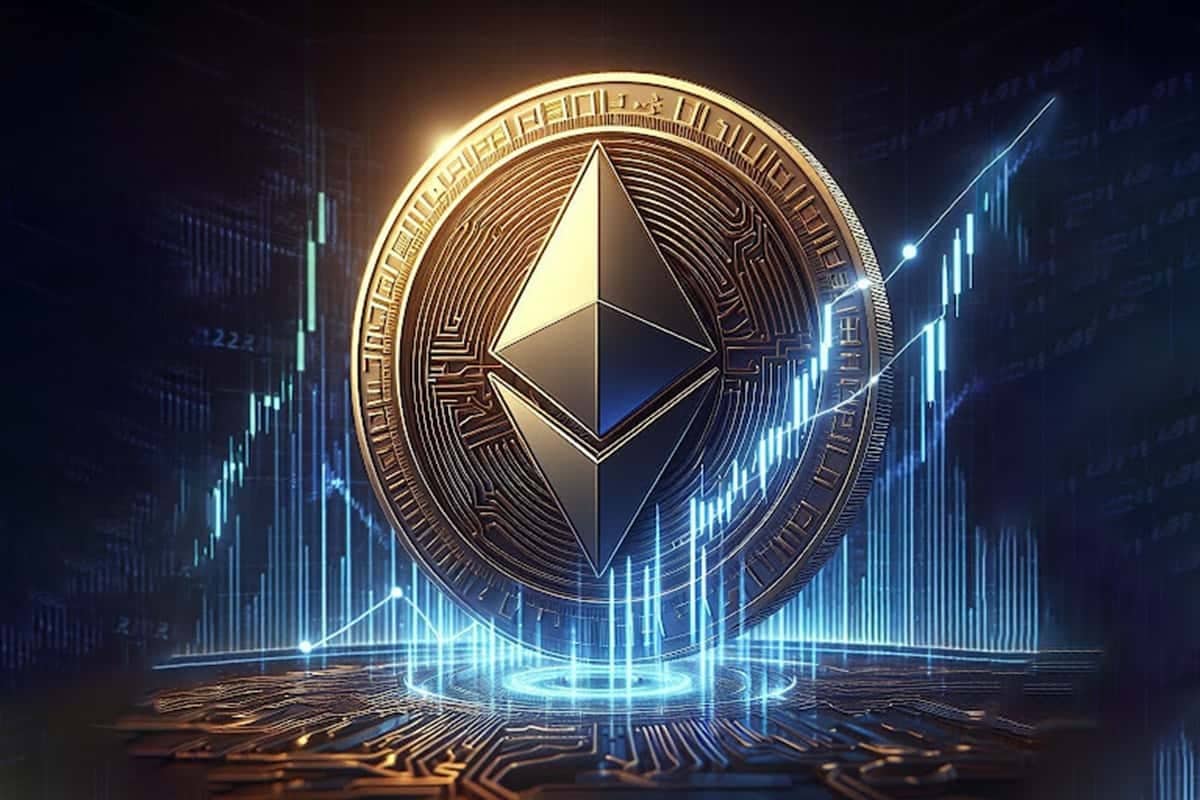
Let's first discuss whether there is a bubble in AI. Lin Chao's conclusion is that there definitely will be one. Behind any story, there must be a bubble, and the most intuitive manifestation of a bubble is capital self-circulation.
Nvidia invested $100 billion in OpenAI, not in cash, but by converting its chips into equity. After OpenAI received these chips, it signed a $300 billion cloud service contract with Oracle, which then used that money to buy Nvidia's chips. In the end, Nvidia made money and reinvested the profits back into OpenAI, so the entire process did not create new jobs or actual AI application scenarios; it was merely a cycle of chip equity valuation and refinancing. In simple terms, it is like stepping on one foot while pushing off with the other, continuously rising.
Throughout this process, the company's market value keeps increasing, but in reality, it has not made significant contributions or provided more new jobs. Moreover, currently, 95% of AI investments by enterprises have not generated quantifiable commercial value, and the capital expenditure in the entire industry is six times the income, a ratio that far exceeds that of the 2000 internet bubble. However, once the bubble bursts, someone will have to pay the price, and that could be investors worldwide.
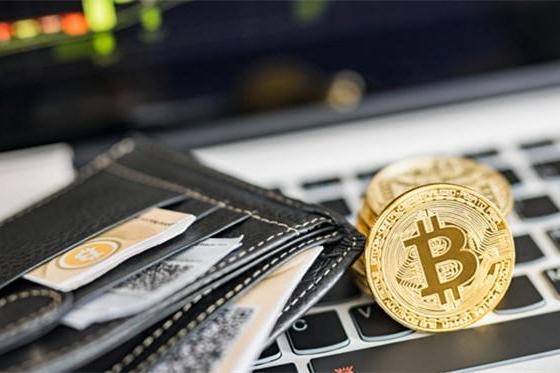
Many people think that even if the AI bubble bursts, it is just a matter of tech stocks falling. But in fact, it is not like that; this kind of bubble hides systemic risks in the global financial market, especially for the US. Currently, the seven major tech stocks in the S&P 500 account for over 30%, which means that nearly half of the entire stock market is betting on AI. If AI applications fail to deliver profits in the future, the stock market will inevitably experience a stampede-like sell-off, and the cryptocurrency market is even more sensitive than the US stock market, as we can see from this recent decline.
Moreover, it is important to note that 80% of American residents' wealth is in the stock market. Once the financial market collapses, their retirement funds and pensions will face immediate collapse. In terms of the real economy, there will be a large number of idle data centers and excess computing power, all backed by massive bank loans. Once the bubble bursts, banks' bad debts will rise, making it very difficult for ordinary people's loans and startups, while industries relying on AI investments, such as construction, electricity, and hardware, will collectively suffer, further increasing unemployment rates and causing severe recession.

If the US economy falls into a major recession, all countries in the world will be affected. So does the US not know this? Of course, they know, but they are powerless. They must take this gamble because on one side, the existing economic increment cannot bear its high debt costs, and on the other side, China is continuously catching up in various fields, threatening its dominant position. The dual contradictions of internal and external factors force it to explore a new path for growth to break this deadlock.
Looking at it now, the only path is to seize the high ground in AI. If AI succeeds, everyone will be happy and continue to develop the economy. But if it fails, can they bear the cost? Ordinary people may not be able to withstand it, but for their major consortiums, capitalists, and financiers, will it have an impact? You must understand that the US stock market allows for both long and short positions; when one group falls, another group rises.
Therefore, for the true top-level designers, they are merely using the redistribution of interests as a bargaining chip to gamble on the foundation of American hegemony, which is the fate of the United States. Under the US system, it seems that there is nothing wrong with this. So bubbles are good, and when bubbles burst, it is bad. The formation of bubbles is accompanied by rapid asset expansion, which is a dividend for everyone holding such assets at that time. However, once the bubble bursts, anyone who has not exited will be completely wiped out.
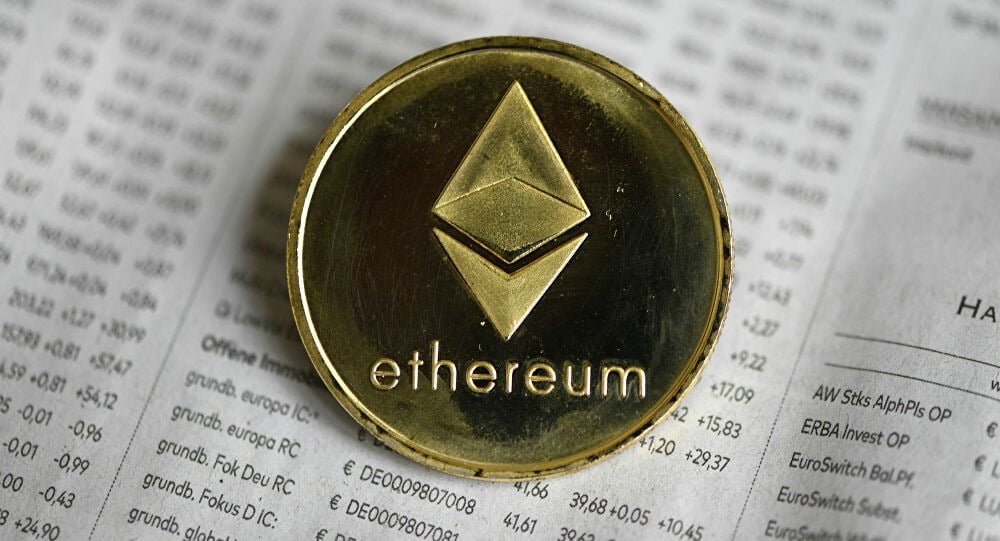
Lin Chao summarizes:
Talking about the US stock market is to help everyone better understand the cryptocurrency market, especially since Trump took office, the cryptocurrency market has become the backyard of American finance, which I have mentioned in previous articles, so I won't elaborate further. Here, Lin Chao wants to repeatedly remind everyone that the market is trending downwards, and it is best to go with the trend rather than think about bottom-fishing. Do not think about how great you are, being able to sell at the highest point and buy at the lowest point; those who often die in the market are usually this type of person. Lin Chao once had a period where he thought his judgment was excellent, always believing he had mature skills and rich experience. In reality, he was nothing.
If a person is not from the future, it is hard to always be right. On the contrary, I admire those who hold different views and are willing to stand by their opinions; they are worthy of respect because they are not just talking but are genuinely investing based on their understanding of the market, which is already commendable. Correcting mistakes is fine; learning from errors is what matters. I do not consider myself a very skilled trader; my way of making money is simple: follow the trend, believe in myself, and hold on. The main thing is that I trust my judgment and will not be influenced by the noise in the market, especially since I can clearly distinguish between opinions and facts, while most people struggle with this point. Even if you say the world will end tomorrow, I will still only trust my judgment. I may not be right. If I am right, I will reap the rewards. If I am wrong, I will stand at attention and take the hit.
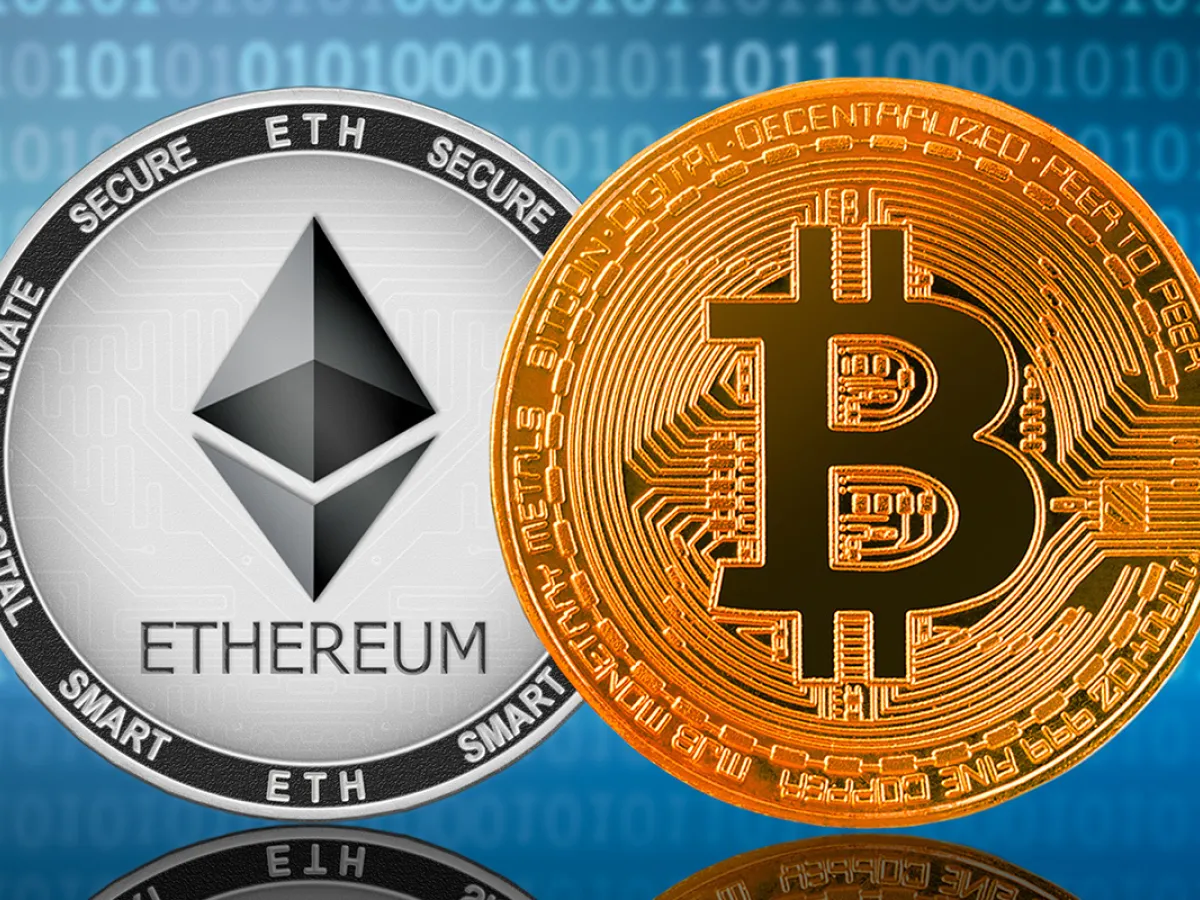
The success of investment depends not only on choosing good targets but also on when to buy and sell. Preserving capital and making good asset allocation is essential for steady progress in the ocean of investment. Life is like a long river flowing into the sea; what determines victory or defeat is never the gains and losses of a single pass or moment, but rather planning before action and knowing when to stop to gain.
The global market is ever-changing, and the world is a whole. Follow Lin Chao to gain a top-tier global financial perspective.
This article is merely a personal opinion and does not constitute any trading advice. The cryptocurrency market has risks; invest cautiously!

For real-time consultation, feel free to follow the public account: Lin Chao on Cryptocurrency.
免责声明:本文章仅代表作者个人观点,不代表本平台的立场和观点。本文章仅供信息分享,不构成对任何人的任何投资建议。用户与作者之间的任何争议,与本平台无关。如网页中刊载的文章或图片涉及侵权,请提供相关的权利证明和身份证明发送邮件到support@aicoin.com,本平台相关工作人员将会进行核查。




